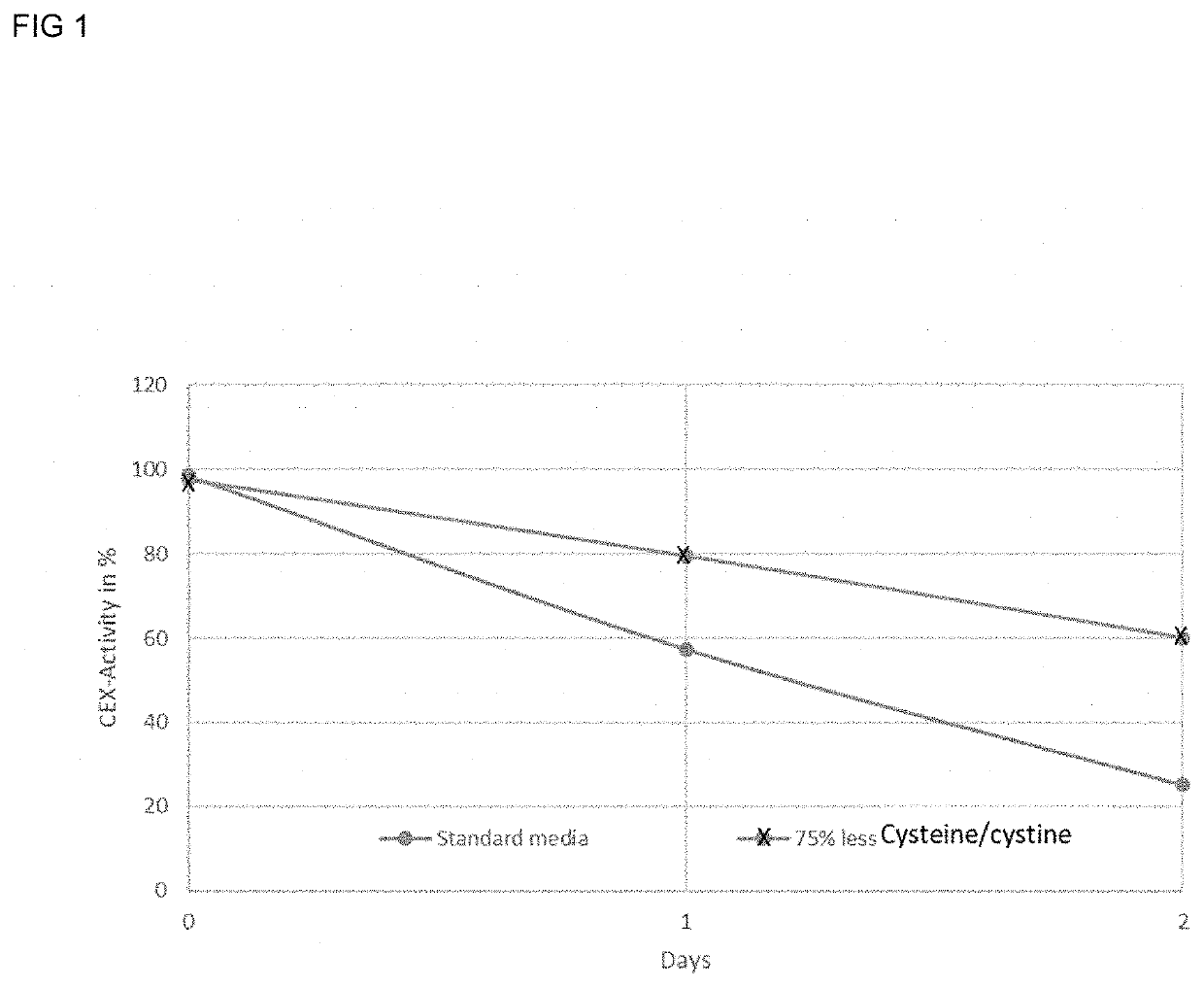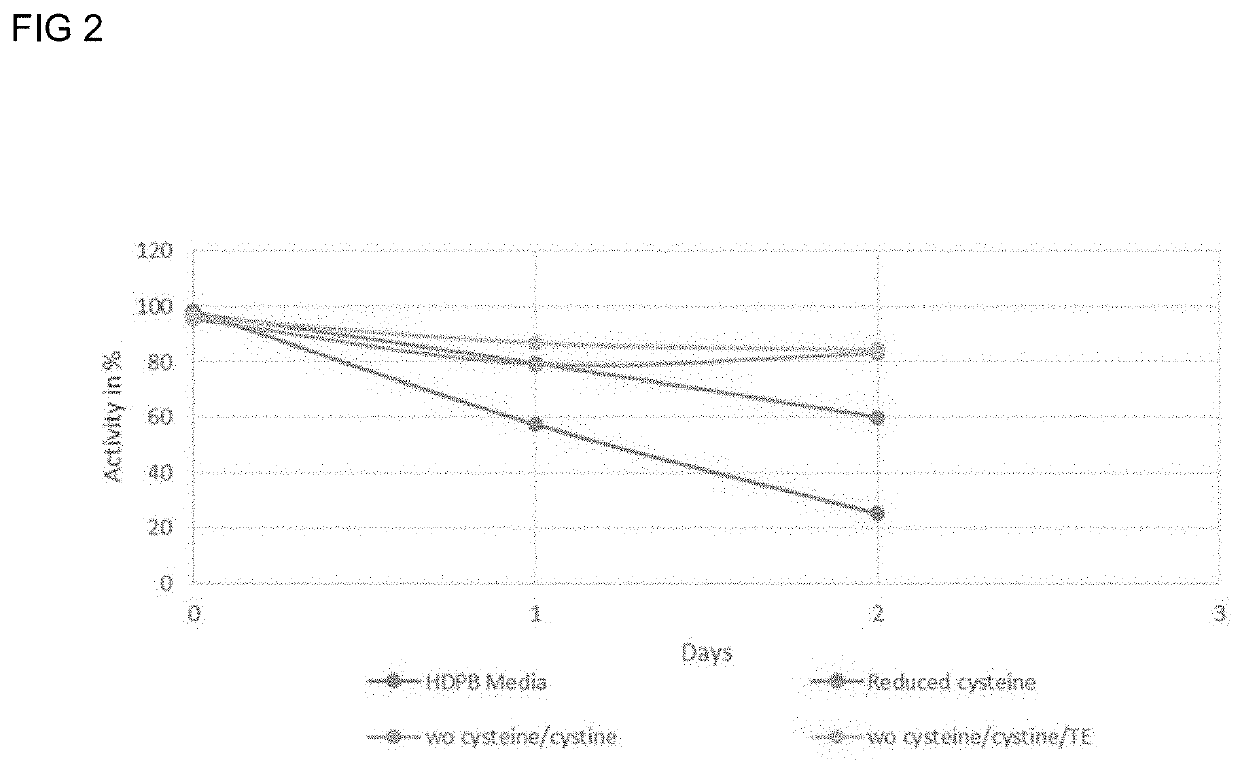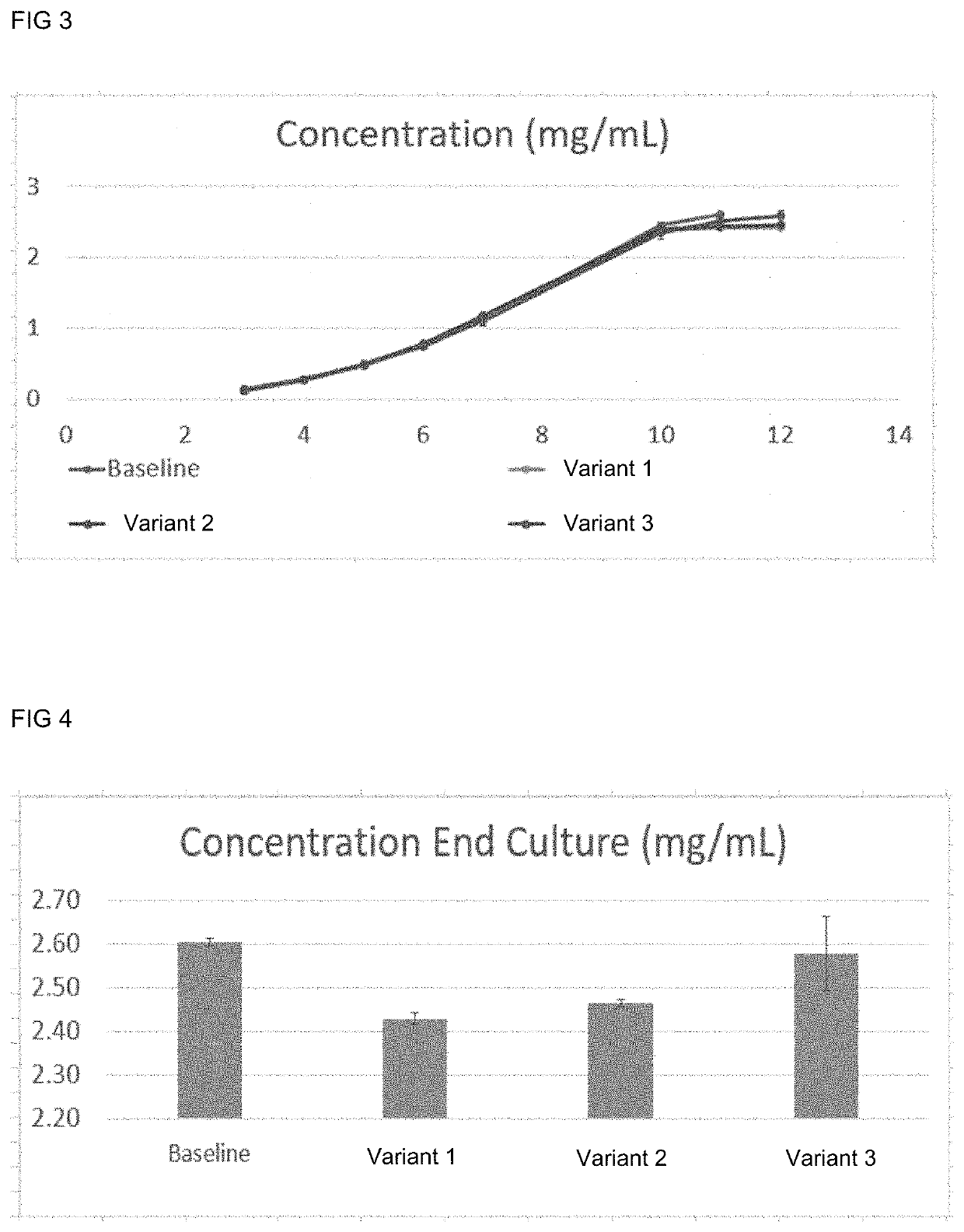Methods for reducing the oxidation level of cysteine residues in a secreted recombinantly-expressed protein during cell culture
a recombinant protein and cell culture technology, applied in the field of cell culture, can solve the problems of prolonged process lead time, undesired cell-based modification of cysl97, and difficult processing of antibodies
- Summary
- Abstract
- Description
- Claims
- Application Information
AI Technical Summary
Benefits of technology
Problems solved by technology
Method used
Image
Examples
example 1
[0108]A set of experiments was designed to see if cys97 oxidation of secukinumab occurs extracellularly.
[0109]Purified secukinumab drug substance was diafiltered (Amicon Ultracel tubes) with cell culture media that has standard amount of cysteine / cystine. Then, the solution was diluted in the media to a concentration of 1.5 g / L to be aligned with bioreactor titer. After this, the solution was incubated at 37° C. Finally, samples were taken after 24 and 48 hours for cystamine-CEX for free cys97 percentage.
[0110]Table 2 shows that free cys97 percentage decreases significantly after media incubation which suggests that cys97 can be oxidized in extracellular environment containing cysteine / cystine after secukinumab is secreted. This understanding led to the hypothesis that cys97 oxidation could occur due to the presence of cysteine / cystine in the cell culture medium.
TABLE 2Secukinumab drug substance incubation with cell culture mediaIncubationSample NameTimeTempFree cys97%Sample 1Day 09...
example 2
[0112]Previous observations had shown that incubation of secukinumab in media such as a perfusion medium at 37° C. resulted in a decrease in antibody activity over time. To determine whether the levels of cysteine / cystine, i.e. cys equivalents, in the media could diminish the drop of activity, secukinumab eluate was incubated in different variations of media based on a standard perfusion media to investigate the effect of media components.
[0113]To minimize dilution effects when adding sample to the media, the starting solution was diafiltrated in perfusion media. The obtained solution was added to perfusion media to achieve a final volume of 50 ml and a final protein concentration of ca. 1.5 g / L to mimic a typical antibody bioreactor titer. The solutions were incubated at 37° C. (standard bioreactor temperature) for two days. After 24 and 48 h, 25 ml samples were taken and the antibody captured. All samples were analyzed by Cystamine-CEX for activity. In the standard perfusion media...
example 3
[0116]To determine the effect of the change in cysteine / cystine, i.e. cys equivalents, in a fed batch reactor method, an experiment was designed based on standard principles of CHO cell expression of secukinumab. The concentration of cysteine was varied in both the base media and in the feed media. No change was made to the concentration of cystine added from a tyrosine / cystine stock solution. The media variations tested are given in Table 4 below with the fed batch cell culture run for 10 days. Even with the reduction or removal of cysteine from the base or feed medium, cystine was still present in the media from the tyrosine / cystine stock solution. Therefore, the total cys equivalents for the baseline and media variants are also given in Table 4.
TABLE 4Cys Cumulative cysequivalentsequivalents added in base and to the cellfeed mediaculture at MediaMedia description(g / L)Day 10 (g / L)BaselineStandard base medium (1:10.620.61cysteine to cystine)Standard feed medium1.10Variant 1no cyste...
PUM
| Property | Measurement | Unit |
|---|---|---|
| Length | aaaaa | aaaaa |
| Fraction | aaaaa | aaaaa |
| Fraction | aaaaa | aaaaa |
Abstract
Description
Claims
Application Information
 Login to View More
Login to View More - R&D
- Intellectual Property
- Life Sciences
- Materials
- Tech Scout
- Unparalleled Data Quality
- Higher Quality Content
- 60% Fewer Hallucinations
Browse by: Latest US Patents, China's latest patents, Technical Efficacy Thesaurus, Application Domain, Technology Topic, Popular Technical Reports.
© 2025 PatSnap. All rights reserved.Legal|Privacy policy|Modern Slavery Act Transparency Statement|Sitemap|About US| Contact US: help@patsnap.com



